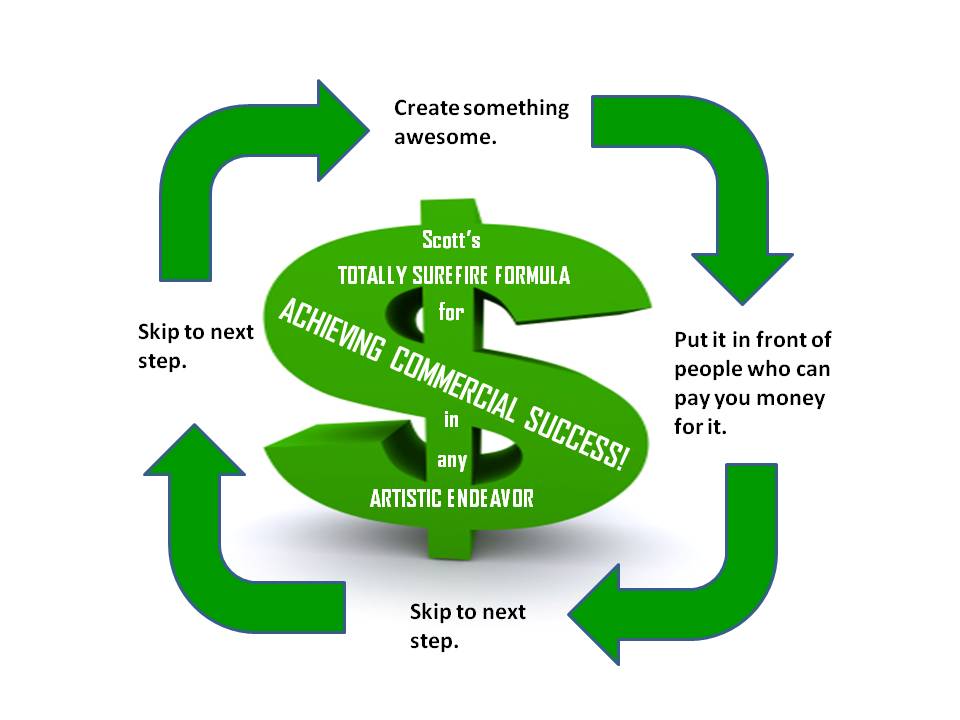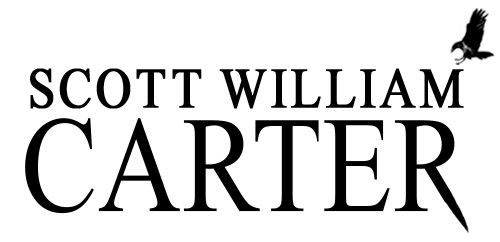Last year, Bookwhirl.com put out an infographic that’s been making the rounds again: “Ways to Publish and Sell Your eBook.” Or maybe it’s never stopped making the rounds. Hard to say. In any case, I saw it pop up on a couple of sites. What’s funny about this one is that it reads as if it were written by someone who learned English as a second language, and it’s festooned with errors (see the descriptions for #4 and #6). The fact that it’s making the rounds again is indicative to me that people often post this sort of thing because it looks impressive when scanned, but they’re not really reading it carefully. It’s just something to post so they “advertise and use social media” (#7) and “create platforms” (#8).
So I decided to create my own impressive-looking infographic: “Scott’s Totally Surefire Formula for Achieving Commercial Success! in any Artistic Endeavor.” In one snazzy and appropriately colored infographic, it shares what I believe is the ultimate key to making money not only as a writer, but in any artistic pursuit. Feel free to copy and paste it far and wide. If you wouldn’t mind linking back to this post, it’s appreciated, but truly, my greatest reward will come from knowing that I have passed along my special secret to other up and coming writers.

(click for larger, even more awesome infographic)
Sure, it’s a joke (what, the exclamation point after SUCCESS! didn’t clue you in?), but here’s the thing. It’s also true. If we’re talking about writing, then creating something awesome involves not just writing a great book (which means learning the craft of storytelling), but it also means packaging it well — an engaging book description, a professional copy edit, a snappy cover. The whole thing has to make potential readers sit up a little straighter in their chairs and say, “Wow, that looks awesome.”
It’s not enough to create something awesome, though. You’ve also got to put it in front of people who can pay you money for it. Yes, this means publishing it in as many formats (paperback, ebook, audio) and markets (Amazon, B&N, iTunes) as possible, but it also means experimenting with different types of book discovery tactics to get more eyeballs looking at your awesome thing (advertising, bundles, loss leaders). And of course, following the arrows, you repeat this as often as possible (in other words, practice).
Beyond that? Well, you can certainly get more specific in your advice, but truthfully, everything else that has any value in achieving commercial success in any art should fit into one of those two areas.
I mean, it has to be true, right? There’s an infographic and everything.
